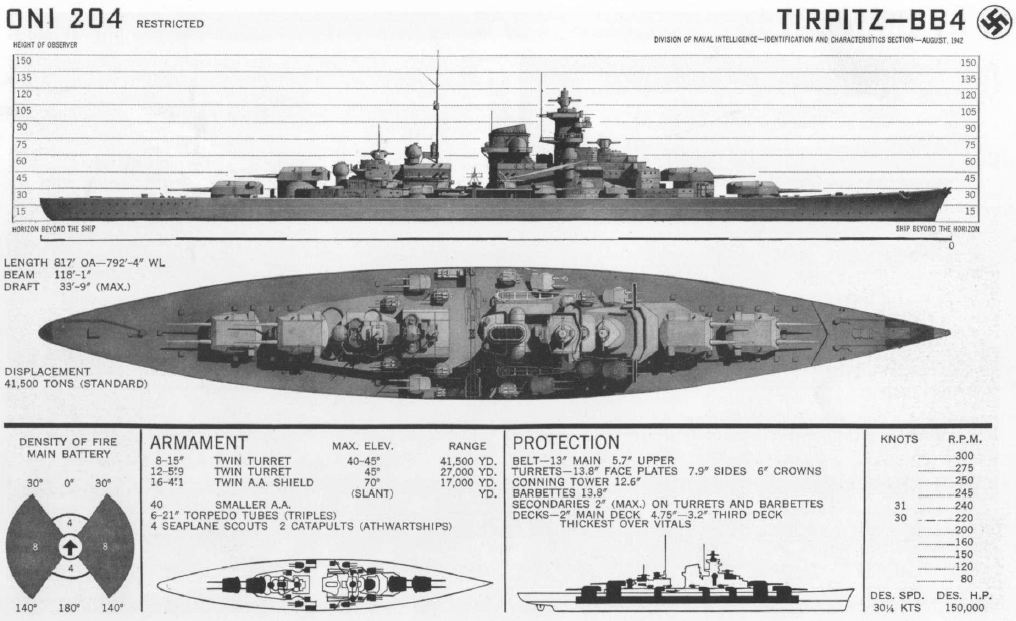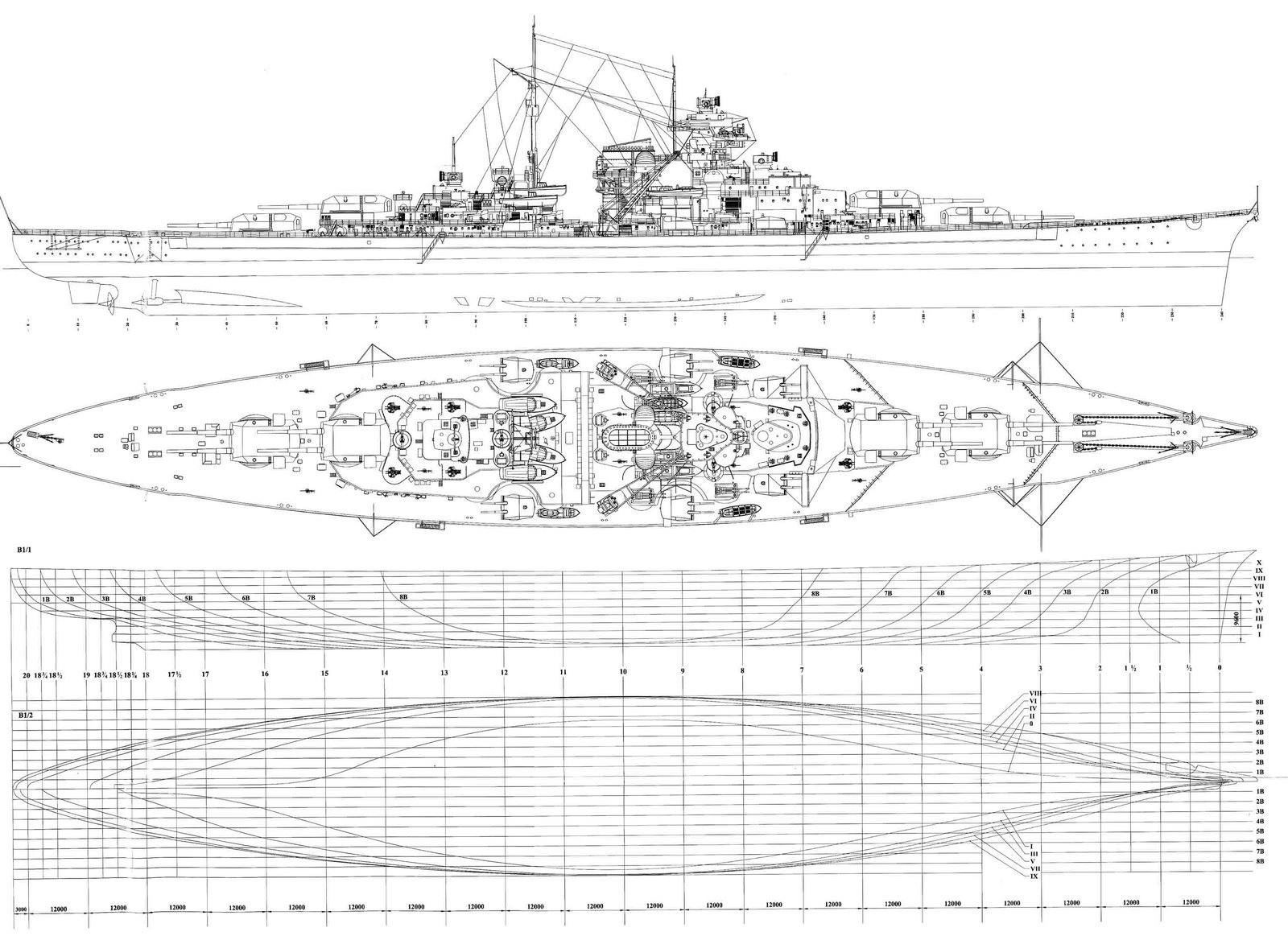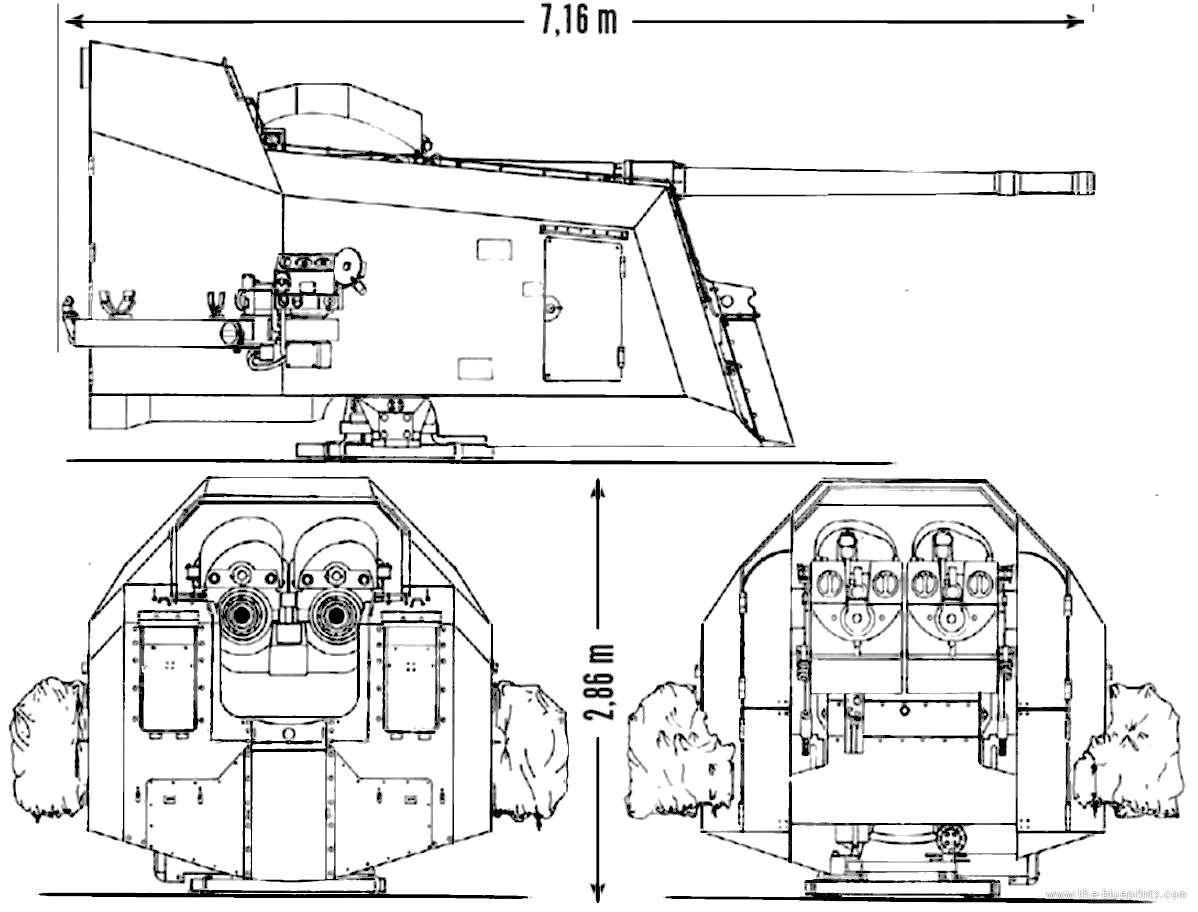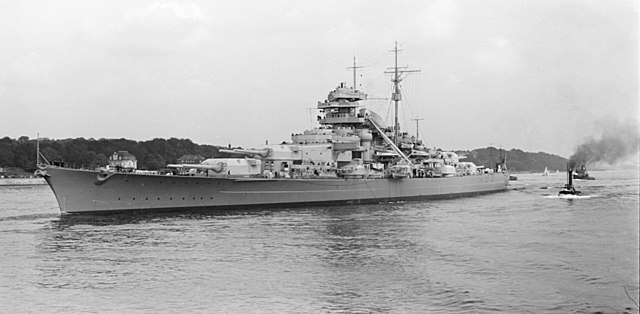The Battleship Bismarck was one of the most imposing and feared battleships of World War II. Built for the German Navy (Kriegsmarine), the ship represented the pinnacle of Nazi Germany’s naval technology. Its short but intense service, culminating in the famous final battle against the Royal Navy, made it one of the most iconic warships in history.
Technical Characteristics
The Bismarck was 251 meters long, 36 meters wide, and had a displacement of over 50,000 tons at full load. Its armor was among the most advanced of the time, with thicknesses up to 320 mm on the main belt and 360 mm on the turrets. The primary armament consisted of eight 380 mm guns arranged in four twin turrets, supported by a wide array of secondary and anti-aircraft weapons.



The Journey of the Bismarck
Launched on February 14, 1939, and completed in 1940, the Bismarck entered service to participate in Operation Rheinübung in May 1941. Its mission was to disrupt Allied shipping routes in the Atlantic.
After sinking the battlecruiser HMS Hood on May 24, 1941, in the Battle of the Denmark Strait, the Bismarck became the primary target of the Royal Navy. Damaged by a British torpedo bomber that crippled its rudders, it was eventually surrounded and destroyed on May 27, 1941.
The Final Battle
As dawn broke, the Bismarck was trapped. The mighty British battleships HMS Rodney and HMS King George V opened fire, unleashing a storm of devastating shells. The 406 mm shells tore through the thick armor of the German ship, turning the deck into an inferno of flames and debris.
Despite the relentless bombardment, the Bismarck's crew did not surrender. The ship’s guns returned fire desperately, but the battle was becoming increasingly one-sided. British artillery struck with surgical precision, progressively disabling the ship’s defenses. Smoke engulfed the vessel like a shroud as violent explosions ripped through the sky.
With its rudders jammed and its structure devastated, the end was near. Survivors desperately tried to abandon ship as water flooded the compartments. Some accounts suggest that German officers ordered the self-scuttling of the ship to prevent it from falling into enemy hands. After hours of bombardment, the Bismarck listed to one side and disappeared into the depths of the Atlantic Ocean, taking with it its crew and tragic fate.
Approximately 2,100 sailors lost their lives, while only 114 were rescued. The sea swallowed the colossus, but its legend lives on.
Why Was the Bismarck Defeated?
Despite its impressive firepower and thick armor, the Bismarck was doomed by several factors. The most decisive was the British torpedo bomber attack, which irreparably damaged its rudders, preventing the ship from maneuvering and sealing its fate. Additionally, the numerical superiority of the Royal Navy, which deployed an entire fleet, made any escape or counterattack impossible.
The strategies adopted by the Kriegsmarine also played a crucial role in the battleship’s downfall. The lack of adequate air and naval support left the Bismarck isolated in the Atlantic, at the mercy of British hunters. Had it received reinforcements or reached a safe port, its fate might have been different.
What If History Had Gone Differently?
What if the Bismarck had not been hit in the rudder? If the ship had managed to evade the Royal Navy’s pursuit and repair its damage in a French port, it could have returned to action and become a constant nightmare for Allied convoys.
Another hypothetical scenario sees the Bismarck accompanied by other Kriegsmarine units, such as the battleship Tirpitz or heavy cruisers. With proper coverage and logistical support, the ship could have transformed the Atlantic into a hazardous zone for the British Navy, potentially altering the course of naval warfare.
Had the Bismarck survived and continued its mission, the United Kingdom would have had to dedicate even more resources to stopping it, possibly diverting efforts from other areas of the conflict. However, the Allied air superiority and the growing power of the United States would have likely made its long-term survival difficult.
Discovery of the Wreck
In 1989, explorer Robert Ballard discovered the wreck of the Bismarck at a depth of approximately 4,800 meters in the Atlantic, confirming that the ship had been scuttled rather than completely destroyed by British fire.
The story of the Battleship Bismarck is one of the most fascinating of World War II. With its power and tragic fate, it represents a symbol of the era of great battleships and naval warfare. Its memory lives on in books, documentaries, and historical research.
Sources:








Leave a Comment